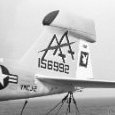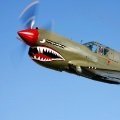Leaderboard
Popular Content
Showing content with the highest reputation on 08/10/2021 in all areas
-
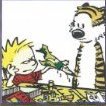
Tamiya F-4B Phantom Conversion (Finished! 25 Sep)
JeepsGunsTanks and 12 others reacted to easixpedro for a topic
So managed a bit more work on her before cleaning up the work bench and putting things up. The canopies on the Tamiya kit are a PITA. Mostly because of the design and that there are sprue gates on the clear. Why they aren't solid pieces including the canopy frames is one of those things we'll always wonder about... So of course I set about to try and use them. Here's the aft canopy--the poor fit worked in my favor here as I needed to sand down just an RCH to make it fit, which in turn got rid of the attachment bits. Here's the windscreen. Think I managed to effectively fix it. You can barely eak it out (mind you this is under the macro lens). Here's the 3 foot view--not really visible. I'll call it a win! Of course the pilot's canopy is the worst, so we'll see if I can polish it out. I'm hopeful... Here's the hook under a coat of paint. Not too shabby. Needs some bolts added and I'll add the pneumatic link once it's going in for the last time. Here's an overall shot. I obviously started shooting paint this weekend. Didn't plan to, but wanted to get the engines in and needed to paint the hot sections to get them in. One thing led to another, and here we are... And from the backside. Managed to knock off one of the inboard flaps, so I'll have to go back and fix that. Always an issue, as they hang waaaaay down. Things get easier once the base and hook are ready as then I can just set it in place and not worry so much. All in all, pretty happy with how everything is shaping up! That's it for now--lots to go still. I'll update once I get something worth showing! -Peter13 points -
boxart https://www.facebook.com/Great.Wall.Hobby/10 points
-
A Different Kind of Build
Alain Gadbois and 7 others reacted to Greif8 for a topic
I have not posted a lot for the past few weeks; nor have I worked on any models. The reason is in the photos below; my new "Man Cave". I remodeled the area above my garage installing dry wall, an insulated floor, framing in the windows and then painting the walls/ceiling. I also built storage areas for the stash on the sides of the walls and a shelving system that pretty much surrounds a worktable where the new airbrush area is. I also built the three stairs leading up to the exit and installed the folding door. The only thing I contracted out was cutting through the inside wall where the folding door is. I finished construction Friday evening. Needless to say, it was a massive project that took me about 3.5 weeks to finish; but I am pretty satisfied with the end result. I can now turn my attention towards finishing the Lancaster "Nose Art" build. The far side of the room. You can see my other hobby on the table in the center, as well as lining several of the shelves. The table on the left that is partially shown is where I build my kits. The other end of the room. I have posted most of the builds in the glass cabinets on the forum over the past few years. Yes, I am a bowler! The storage area for the stash along one of the walls. I still have to adjust a couple of the doors for alignment, but they get the job done. The other side of the room showing more storage space, the "bench" and another table for my daughter to color on while I work. She used to do that on a tiny table behind the bench; now we can sit side by side. A closer view of the air brushing area. I used to have to run the exhaust out an open window; now it exits through the outer wall, much more practical - and warmer - in the winter or during rainy weather. The upper four drawers on each side of the airbrush table hold all my paints. I have arranged them by type, organized like the photo above shows. Hopefully I am not coming off as bragging; but I put a lot of work in both designing the layout of the room and then building it all, and wanted to share some joy with the guys I can connect with. Ernest8 points -
Time to really bring this build to life. Tonight i was just going to mark out the invasion stripes and hit the rack, it is a work night. But then one thing led to another and i shot the black. Then, after dutifully cleaning my airbrush, i unmasked the stripes. Then i wanted to see the stars and bars with the stripes. Then i wanted to see the long ago covered fuselage codes. Then the red rudder called me. I lost control. anyway, the stripes went on without incident. There is a scratch on the upper right wing that i will need to cover, and that right side intercooler door remains a disaster. Oh, and the allclad lifted off the supercharger exhaust. Pity, it went down so smoothly. I will sand and reshoot that in the future. But other than these minor touch up type issues, i am pretty happy with how it looks with markings. photos. Here is all i intended to do tonight. I got some pinstriping tape at some point, it is about 1 mm wide, amd it is the easiest way to mask, particularly when you need either a long, straight run or crazy curves. It just doesnt leave a gap no matter what you do to it. You can see it on the wing trailing edge next to the blue tape. overall shot of the stripes Close ups of the lower wings for some reason there is a bit of white where it shouldnt be on the right wing at the edge of the stars and bars this angle looks a bit like the crash photo a little overspray due to the limitations of the masks with the deep 3d intercooler door cutouts, this will be an easy fix The troubled right side Sorry a few of the photos arent the clearest, work night and garage lighting. I will snap some daylight shots in a day or two. I am very happy with the way the vinyl masks work and the results. thanks for looking! Bill7 points
-

1:32nd scale Junkers D.I
Uncarina and 5 others reacted to sandbagger for a topic
Hi all, I thought you might like to see my 1:32 scale build of a Junkers D.I from 1918. This model depicts a Junkers D.I that was involved in a flying accident, possibly during testing, on the 3rd of October 1918. It was most likely repaired and possibly given the Ser No: 5188/18, before being operated by either MFJG in Belgium or with Kampfgeschwader ’Sachsenburg’, operating in the Baltic during 1919. Design: The lineage of this aircraft traces back to Professor Hugo Junkers, when in 1912 he patented a design for a thick, cantilever constructed initially of corrugated steel. The first Junkers J.I and J.2 monoplanes were built but proved too heavy for operational use. Subsequently, the Junkers J.3 was redesigned during 1916 using an aluminium alloy (Duraluminium). However, it was shelved when production was switched to the Junkers J.1 biplane, which entered service in 1917. Due to the positive response for the J.I, work recommenced on an armoured single seat monoplane, starting with the Junkers J.5 through to the J.9, which eventually became the operational Junkers D.1. The maiden flight took place in May 1918 and further changes to the design saw 4 aircraft of the final version dispatched to the front in October 1918. The design of this aircraft was revolutionary for its time, a monoplane of metal construction and with only cross brace rigging on the undercarriage. The airframe was essentially of tubular construction with corrugated Duraluminium covering. Various engines were fitted during the prototype stages, but it seems the Daimler-Mercedes D.IIIa (180hp) or D.IIIaü (200hp) engines were fitted to operational aircraft. Armament consisted of twin 7.92 mm LMG 08/15 ‘Spandau’ machine guns. Operational background: The Junkers D.I was designated as a ‘battle plane’, meaning its perceived operational role was to be that of ground attack, rather than as a fighter. Only 40 aircraft were built between June 1918 and February 1919 and it seems of these, only 5 were delivered to the front. It's not certain than any of these aircraft took part in actual combat, although there were reports from the British late in the war that there were ’encounters with German monoplanes that were covered with corrugated sheet’. These 5 aircraft were eventually abandoned on the German landing field of Hombeek in Belgium. However, the aircraft did see active service after the war, in action against the Bolshevik forces in the Baltic countries, serving with the ‘Kampfgeschwader Sachsenburg’ volunteer regiment, commanded by Gothard Sachsenburg, a former pilot of the German naval ’Marine Jasta’. The regiment consisted of 3 squadrons, being FA413 (reconnaissance), FA416 (fighter) and FA417 (ground attack). Both FA416 and FA417 operated the Junkers D.I as well as the Junkers CL.I (two seat version) aircraft. A few aircraft were lost in combat, including a Junkers D.I being flown by Josef Jacobs. When hostilities ceased, those aircraft remaining were found by Soviet forces, abandoned on an airfield near Riga. The model is 1:32nd scale and made by ‘Wingnut Wings’ (Kit No: 32065). The list of changes/additions to the model are: Engine: Detailed with Nickel-Silver and Brass rod or tube to replace Coolant pipes, ignition lead support tubes, sump vent pipe, induction manifold pre-heat pipes, forward air pump pipes. Ignition leads at the Magneto’s and spark plugs are lead wire. Spark plugs and fuel primers are from ‘Taurus Models’. Rigging: Rigging is 0.08 mm or 0.12 mm diameter mono-filament with ‘GasPatch’ 1:48th scale turnbuckles and 0.5 mm or 0.4 mm diameter blackened Brass tube. Aftermarket: ‘GasPatch’ Spandau machine guns used to replace kit parts. Pilot figure is Wings Cockpit Figures’ LSK leaning pilot (LSK 14), Mechanic figure is ‘Copper State Models’ German ground crew (F32-012). Propeller was the Axial wood laminated version from ‘ProperPlane’. The forum build log is here: As usual I've created a downloadable build log in Adobe PDF format, for those who might want to refer to it for reference or build details. It contains full step by step descriptions of the model build, its modifications/changes and is also supported with illustrations and photographs. If viewed in Adobe Reader, each build log has book marked chapters/headings for easier navigation through the log. My model website has the gallery page, so to view any model, go to the gallery and select it. If it has a PDF build log, it will be available to download using the 'PDF' icon on that model photo page. For any photograph, just click the photo to enlarge or reduce the viewing size. http://igavh2.xara.hosting Mike6 points -
6 points
-
I’ve become very interested in the early years of the Pacific campaign, so after my Wake Island Wildcat I decided to build an SBD that flew out of Guadalcanal. This build took 14 months to complete and, if you’re interested, the build thread is HERE. This is a nice kit, but it sure reinforces the Trumpeter A-team, B-team theory. The cockpit, engine and smaller parts/assemblies are easy and well engineered. The fuselage and especially the cowling do present some challenges which are detailed in the build thread. Aftermarket parts were limited to the Eduard Interior placards, Archer Rivet Skins and data stencil decals. Other than that I made the seatbelts out of paper using the kit PE hardware (despite it’s poor detail) and my own decals with lacquer and masks I cut on my Silhouette 3 and clear decal film. Again, the process to do this is detailed in the build thread. I used AK Real Colors for the Blue and Gray and Mr.Color for everything else - all lacquer and all weathering was done with oils. Okay, enough blathering, here’s the glamor shots: Inspired by: Thanks for looking!4 points
-
Greetings, today I want to present a photo of the details of the project on which we are currently working. Some time ago I posted a photo of the engine and hood, it's time to demonstrate some basic details and clarify what kind of aircraft it is. Your attention is the 1:32 Su-2 with the M-82 engine - a Soviet short-range bomber of the beginning of World War II and the Great Patriotic War. The first plane of Pavel Sukhoi was created in his "own" design bureau after emerging from the shadow of Tupolev. At the beginning of the war, these aircraft took on the enormous burden of fighting and were often used as attack aircraft without fighter cover, suffering huge losses. Nevertheless, this in many ways an interesting aircraft left its mark on the history of aviation and actually became the ancestor of the family of Soviet aircraft under the name "Su" https://www.facebook.com/photo/?fbid=2902543083338739&set=pcb.29025432700053874 points
-

Quinta Studio's 1/32 scale A-10C interior for Trumpeter kit
Daniel Leduc and 3 others reacted to Quinta Studio for a topic
Hello! Here's the new 1/32 scale release: A-10C 3D-Printed & coloured Interior on decal paper (for Trumpeter kit) Article: QD32073 Price:26€ Available to buy on: https://quinta-studio.com/en/product/360/ https://www.ebay.com/itm/165009458761 https://www.etsy.com/listing/10510664764 points -

Revell Messerschmitt Bf 109-G6 late
Isar 30/07 and 3 others reacted to duke_ for a topic
..some progress on the fuselage painting i sprayed the two camouflage colors ak rlm 81 v3 for the brown and RLM 81 version 2 (green shade) for the green, i didn't use the RLM 82 (light green) because all the references shown that green was darker than brown, and, as AK rlm 82 was too bright , that was my decision then i painted the fuselage band and tried some mottling.. this is my first take on this kind of camouflage, i have never tried to spray mottling so i was very cautious and i switched to my 0,2 iwata hp B plus.. i am happy with the result so far and i think i could manage to paint a decent mottling.. i stopped after some tests because i would like to study further the mottling on this aircraft sinsce as far as i can see it is very complicated and colors are overlapping creating a very confusing pattern,, i don;t know if there is a rule about mottling, and how the did it in real life.. it was random? it had specific pattern? i don;'t know but i will try to do my best looking at photos now my favourite part.. spraying the aircraft markings is when it comes to life.. all good, no accident! after painting the crosses i sanded them down with micromesh to give a worn look and get rid of the hard beveled outline edges .. i will spray another final white coat at a later stage as they need some minor touch-up now the tail swastikas, that was the most difficult part so far.. i mean gents ...it took me forever to place in the correct position the black cross mask in order to paint the white outline .. port side and starboard.. and then disaster strikes!! accidentally , a piece of masking tape stuck on my glove and i pressed it on this area while holding the plane.. then, when i left it on the jig again the tape lifted the paint away,, that's my biggest fear when i am using hairspray.. anyway.. i am lucky enough that the damage is reduced only on this panel and only in one color , think it will be an easy fix ... i hope.. Cheers! and thanks for watching!4 points -
Henschel Hs-129B-2/RIII - Finished
Uncarina and 3 others reacted to Dpgsbody55 for a topic
Progress continues, if a little slowly. I've been applying the decals to this now varnished model, and there's enough that it's taken a few sessions to get them all done. I've been waiting for the last lot to dry so I don't mess up, and in some instances, there's decals that sit on top of decals. So here it is with the gloss varnish done and all the decals applied. Top view. Those chevrons were a bit of a pain, as they come in four parts. Two I get, as the front sits right on a removable panel gap. But the "tails" of the chevron are applied separately, and I don't see why as there's no panel gap there. They did need a few goes with Mr Markfit, but all have set down well on the model. One other pet whinge of mine is the two part swastika. Why??? I understand that some people have an aversion to that symbol, and that's fair enough, but I don't see why it needs to be printed in two halves. Use it or not, your choice, but broken down decals that need putting together amount needless fiddling IMHO. Bottom view. Not much to show here. Wing detail. Often, I will paint the wing walk lines, but these are dashes, so a little more difficult, especially over such a camouflage. So I used the kit decals and each set of markings are one piece. I was concentrating so much on this, I think I almost passed out from holding my breath while trying to nudge them all into place. One went into place very easily, but another gave me a lot of grief, folding on itself more than once. But I'm happy with the results. Nose detail. I assume that this is some sort of unit merit badge, but it's rather hard to make out clearly. Top view again, this time after matt varnish has dried. Here's a few views with all the masking removed, and one engine cowl fitted. I think I'd better remove it again and fix the overspray. As you can see, there's even a decal inside the canopy for judging various pitch attitudes. From here on, it's final fitting and finish. In this case, it's a bit more involved than most other models I've done. Instruments, lights, wheels and u/c doors, propellers, bomb racks, cannon, details and touch ups, plus a little weathering and what ever else I've forgotten. Could take a little longer yet. Cheers, Michael4 points -
The whole thing, with some minor niggles, which will more than likely be addressed by the AM folks (Barracuda), will undoubtedly make it a winner. Already added to my "wants" list.4 points
-
Check out dozens more photos here4 points
-
RAF FG.1 XV571 WILD HARE Phantom Conversion
MDuv and 3 others reacted to Anthony in NZ for a topic
Vari ramps came up nice with a mist of Mr Surfacer 1200 Cheers Anthony4 points -
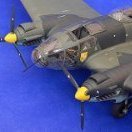
Revell 1/32nd F/A-18E Super Hornet
F`s are my favs and 3 others reacted to tomprobert for a topic
Afternoon all, A few pictures of my recent progress... The underside joins have been made good - you can see the amount of filler needed to cover the large gaps - the wing to fuselage join being particularly poor. Those of you familiar with the London Underground will know the phrase 'Mind the Gap' - well the same certainly applies here... The fit of the fins was equally problematic - again you can see lots of filling has been necessary to get an acceptable join: I've decided to go for wings extended and flaps/slats deployed. The outer wings fitted fine, but the plate that overs the hinge mechanism didn't fit well at all. The hinges themselves foul the plate, so it sat proud by about 1mm leaving more huge gaps. The solution was to file away the upper part of the hinge, and then this allows the plate to sit flush with the wing surface - more filling needed though as still some small gaps remained. I think this was designed for wings folded to be honest, and then this issue wouldn't rear its head: I've also fitted the upper plate behind the cockpit - and guess what? It didn't fit! The rear cockpit bulkhead sits approx. 1mm too high, meaning the upper plate too sits too high leaving a 1mm gap along the joint with the fuselage side. I therefore trimmed the bulkhead, and this did improve things but there were large gaps still left at the rear - again you can see more filling and sanding has been necessary: It all looks a bit messy so everything will get a good polish and then I'll need to rescribe the panel lines and rivets obliterated by the filling/sanding. There is light at the end of the tunnel now though, and the majority (I hope) of the main construction is now behind me... Until next time, Tom4 points -
The Mengnut Wings Fokker is finished!
AlbertD and 2 others reacted to Wolf Buddee for a topic
After a very long time I’ve finally managed to build something from start to finish. I was extremely excited when I heard that Meng was releasing this kit as I was sure the WnWs DR.1 was not to be. It was definitely on my “must have” list” when it was released and it was, IMHO, worth the wait! I hope you enjoy the pics. Cheers, Wolf With some WnWs stablemates! Thanks for lookin’.3 points -
A Different Kind of Build
Tnarg and 2 others reacted to Rick Griewski for a topic
Absolutely excellent!! Great job! I love the activities table for your daughter.3 points -
Great Wall Hobby P-40B Tomahawk in 1/32
esarmstrong and 2 others reacted to morane for a topic
Absolutely superb. I need at least two. I do not know what you think but it seems to me that the arrangement of the parts could facilitate a declination in P-36 / H-75 Richard3 points -
thank you all small progress a lot off things never been seen again after closed Mark3 points
-

Revell 1/32nd F/A-18E Super Hornet
HerculesPA_2 and 2 others reacted to tomprobert for a topic
Afternoon all Some decent progress in the Hornet this week which has focused on the lower fuselage and intakes. The feel of this build so far is akin to that of a limited-run kit; some parts fit really well and others need some careful filing and trimming, but it's nothing a builder with some experience can't handle - good old fashioned "modelling skills" come into play at times and 'this certainly ain't no Tamiya...' The intake trunking has seen a bit of work done to get them seamless (more or less) as the engineering of the kit is a little strange and requires some awkward filling/sanding to get the forward-most parts of the intakes to fit to the inner sections. White Milliput and more insignia white has done the trick, and with the darkness in there any seams are invisible: A lower fuselage plate is then attached to the lower intake trunking, and this closes in the wheel bays to good effect - the fit here was found to be good. Side sections are then attached to this lower plate, boxing in the sides of the wheel bays and extending to the front of the intakes. The required a bit of careful dry-fitting and some more Milliput in the missile troughs but nothing approaching being a deal-breaker: On the upper sides, the instructions tell you to trim the arrowed bulkheads by 0.5mm, but I've hacked 2mm off as this seems to be figure needed seen in other reviews. Now when the fuselage top 'plate' is dry fitted, there are no gaps appearing where the top meets the side/bottom so I'm hoping the worst of the fit issues have been avoided. According to the instructions the next job is going to buttoning the rear fuselage up and adding the wings. More soon! Tom3 points -
Trying to build a plane after losing intrests in this subject en more in to cars at the moment. Here the progress off the great sws kit. Building starts with the engines Paints used are tamiya valejo and mrp. I have finnishd first one engine before i started the next one start with engine 2 And almost there with engine nr2 Next up will be the pit Mark2 points
-

Revell 1/32 Me bf 109 g4 black1
John Stambaugh and one other reacted to duke_ for a topic
FInished some months ago.. My first Gustav MDC cockpit RB productions canopy Montex masks Eagle parts supercharger Eagle ETC rack and droptank Eagle Spinner Hgw seatbelts THank you!2 points -

Blood & Chrome Galactica
Model_Monkey and one other reacted to spacewolf for a topic
The first side was easy.. just 'winging it' and trying to match the armor pattern on the kit provided parts.... the second was pure torture matching in exacting detail the first side !! A ton and a half of work.. but oh how it pops once you prime it !!! Methinks this is gonna look ok. That's it for this time. Thanks for looking in and commenting !! Cheers2 points -

Blood & Chrome Galactica
Model_Monkey and one other reacted to spacewolf for a topic
Update time ! first, for the question of droop over time.. this is the Great Maker's (Tony) build of the kit he's made for us. He provides the two clear Plexi stands and the BSG emblem .. the modeler has to provide the wood base. The plexi stands have tabs that fit into grooves that need to be routed into the wood base. The top of the plexi pieces are shaped to fit into the tunnel on the bottom of the model. It should balance well but there is certainly room to add a third or 4th stand should anyone be concerned about sagging. And to give an idea of the size of this model... here is the Moebius Galactica held beside the kit... and no, that's not force perspective or a trick of the camera.. the Moebius kit is being held right beside the port landing pod... !!!!2 points -
One thing you can try when vinyl masks won't conform exactly to surface detail is filling the gaps with a tiny paintbrush and masking fluid. I find it easier to fiddle with perfecting the masking up front than to go back and try to fix the paint afterwards.2 points
-
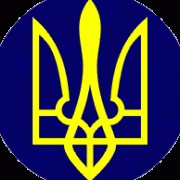
Tamiya F-4B Phantom Conversion (Finished! 25 Sep)
easixpedro and one other reacted to Alex for a topic
Enjoying the naval aviation reminiscence on this thread a lot. Thanks for translating it into "civilian" for us. And thank you for your service!2 points -
Thanks for the comments. I'm a little suprised I am the first one with a build log here. I've added a little detail behind the pilot's seat, as some of it may be seen from a certain angle. The stringers are just scratches in the paint. The supports are wire and the cross braces are styrene. The canvas bag on the right side is tissue paper covered styrene. I'm currently prepping the fuselage top to be glued on.2 points
-
Great Wall Hobby P-40B Tomahawk in 1/32
Dpgsbody55 and one other reacted to MDuv for a topic
No less than 2 sprues dedicated to the plumbing. Must be a first and gonna be great !2 points -
Tamiya F-4B Phantom Conversion (Finished! 25 Sep)
easixpedro and one other reacted to Collin for a topic
That is going to be sick looking when you are finished. I'll be following. Cheers Collin2 points -
A Different Kind of Build
Greif8 and one other reacted to europapete for a topic
Awesome job there Ernest, well done. Don't worry about the lost modelling time, just think of it as carpentry practice for your first large scale plank-on-frame model ship! Regards, Pete in RI2 points -

Great Wall Hobby P-40B Tomahawk in 1/32
LSP_K2 and one other reacted to Dennis7423 for a topic
Wow. this looks like a slam-dunk. Really looking forward to this one! - Dennis S. Thornton, CO USA2 points -
It definitely looks like a must-have.2 points
-
Just keep telling yourself , they're here someplace, they're not in the twilight zone. Look again in places you've already looked. Many times I've found things in places I've already looked. Just didn't see them the first time. You'll find them Kev2 points
-
Great Wall Hobby P-40B Tomahawk in 1/32
LSP_K2 and one other reacted to Dpgsbody55 for a topic
Looks like a "must have" if you like P-40's. This is one that will be in my stash soon after release. Cheers, Michael2 points -
Neat work, I like the detail on the canopy frame2 points
-
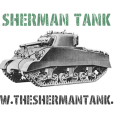
RA-5C things under the wings
John1 and one other reacted to JeepsGunsTanks for a topic
The Sara spent a little time practically sunk at her moorings in the Med once. Cool Vigi pics!2 points -
LAU-3 are 19 tube pods. Jari2 points
-

Great Wall Hobby P-40B Tomahawk in 1/32
allthumbs and one other reacted to Troy Molitor for a topic
X 2.....2 points -
Thank you all for the kind words! I am very happy with the room so all the work I put into was worth it. The only downer was missing a month of modeling time, but it is summer after all, though it has been a rather cool rainy one in Bavaria this year. Martin, the lights are two florescent lights with daylight LEDs bulbs. Richard, the game is one of my Napoleonic games from a game series called La Bataille. This particular game covers the battle of Quatre Bras. Jens, dass stimmt, Ordnung muss wirklich sein! Kev, it took me a while to figure out how to construct the storage setup along the knee walls. It is to bad the vertical wall is not 75-100 cm high as that would have given me a lot more storage room.2 points
-

1:32nd scale Junkers D.I
Archimedes and one other reacted to sandbagger for a topic
Hi all, Here's a few more bits completed for the Junkers. The propeller (ProperPlane), pilot (Wings Cockpit Figures), mechanic (Copper State Models) and the landing gear bracing, Mike2 points -

Tamiya F-4B Phantom Conversion (Finished! 25 Sep)
Alex and one other reacted to easixpedro for a topic
Was a CAG Staph puke 03-05. Joined 'em immediately after they came home from OIF. IIRC, the Prowler had a 27' hook to eye distance. It was a beast to bring aboard. In English for everyone else--that's the difference between the pilots height and where the hook is hitting. All that gets factored into landing at the ship. So even though it might look like a pilot's got a solid approach going on, the hook is a lot lower than he/she is seeing in the cockpit. Becomes a big factor in that small space between the 1-wire and the back of the ship--you might think you're headed for the 1 wire, but combined with a moving ship and that 27' difference, you could very well be heading into the spud locker. Another thing that played havoc with it was the burble--the wake turbulence left by the island as the ship steamed along. Even worse on non-nuke powered ships as you had exhaust from the boilers mixed into the wake. You could watch guys flying a solid approach and then just start dropping like a rock as they hit the burble. Good pilots could anticipate it and catch it, but not always. It usually popped up at the most inopportune times. Always kept things interesting to say the least.2 points -

Tamiya F-4B Phantom Conversion (Finished! 25 Sep)
JeepsGunsTanks and one other reacted to easixpedro for a topic
Kayso… a while back you saw how I shaped a hunk of stainless steel rod to the approximate shape of the hook. This weekend I wrapped it up. Cut apart the kit hook and used the fairing that attaches to the fuselage. A couple of quick cuts and the rod fit perfectly. Then I used the kits hook point and blended that in to mimic the real deal. Here you can see how it’ll look And an upclose view with the fuselage. The burner cans will obscure some of the rod, but I’m not too worried about it. The optical illusion will be enough to distract most. Then it was onto the cockpit. Used the kit figures. It’s far from perfect, but close enough. The wiring coming from the RIO’s panel took forever and a day. My figures are nowhere near as good as Pig’s, but I’m getting better each time. The Tiger stripes weren’t as easy as I remember them being in 1/48. Maybe because I was trying to put all sorts of details. Actually stripped the pilot once as I wasn’t happy. Also need to attach his handles for the ejection seat. Wasn’t feeling it (it being the yellow and black stripes), so stopped to post this instead… Geeze, the macro shot highlights how bad my wash is around the visor knob! Lots of stuff you can’t see with the naked eye… I managed to use a razor saw and save the Koch fittings for the parachute straps and the D-Ring from the resin seats. Gently molded the resin into a curve and it turned out well-can’t have our intrepid aviators unstrapped in their seats. That’s it for now. A nice productive weekend! Family returns this week so I’m sure bench time drop. -Peter2 points -

Revell Messerschmitt Bf 109-G6 late
Isar 30/07 and one other reacted to duke_ for a topic
hi guys! now to the paint shop.. preshading and starting apply late war 76 on the fuselage some light sanding to see how the rivet decals look like , since this is my first try on these.. that;s an interesting effect.. they are very subtle , the only thing i am worrying about is that with all that paint and mottling that follows, they need to be sanded after every layer , otherwise they won't be visible. maybe is better to place them after the painting is done and then spray a light mist color layer on top.. i'll try it on my future fw 190 D9 build since i haven;t any mask available for this machine i am starting design my own markings and i will send them for cutting in vinyl masks.. thanks for watching!2 points -
Hello, I think I’m done improving the engine nacelles. Those boogers were pretty bad in detail. The A-10 has a mixture of round head and countersunk rivets. Since I was in no mood to replace what was sanded off, I re-scribed them. All this work is not accurate and I don’t care much. To me, the nacelles still look like the Hog’s. Before: After: I am using the GT upgrade, the intakes are quite nice but the exhausts have huge rivets and they have to go. Before: After:2 points
-
Following closely with the thinning of the wing : As a starter, the yellow tape was used to delimit the surface to work on. It was removed, scanned and imported in the silhouette software to draw a first mask (the upper one) it was then cut on oramask (the middle one) and applied on the surface to check its fit Then panel lines were drawn with a cd pencil on the mask while on the wing. The drawn mask was then put alongside the others on the paper and scanned. Panel lines were added accordingly using the scan on the cut file. Once everything was fine, thin plastic card was then cut: To be in line with the wing plastic thickness (1mm) another sheet of 0.5 was cut as well, this time without the surface detail. Then the cirurgy on the wing may begin, I just removed material under the mask, if everything was done right, the new part should slot in with minimal adjustment. Point of no return reached.. The new parts are then attached after adding plastic strips to support from under: The Panel lines seems to line up, wich makes me very happy :-) Still a lot of work, but a bit closer now. Ah yes, and I have to other wing to do.. Cheers. Mathieu2 points
-
2 points
-
small things done Thats it for now Mark2 points
-

Revell 1/32nd F/A-18E Super Hornet
KiwiZac and one other reacted to tomprobert for a topic
Morning all, Whilst waiting for some parts to arrive for my Sunderland I have got this back out and on the bench... I have installed the upper fuselage and wings and added the late-version ECS vents. These didn't fit all that well as a unit, but the fit was much improved when I separated them and added them as independent parts - some filler was still needed to blend them effectively and hide some unsightly gaps though: You can also see the traces of filler needed around the rear fuselage where the stabiliser mounts are - this will need a re-scribe before paint. With the innards trimmed down by 2mm the fit was nowhere near as bad as it would have been, however. Upper and lower surfaces together - you mustn't forget to drill out the pylon mounting points before joining top and bottom halves: Also notice the amount of filler needed along the LEX sections - unfortunately the fit here wasn't particularly great: I've since constructed the nose section - wheel bays and cockpit seemed to fit ok and slot into the nose piece without too many issues. However, the fit to the rear fuselage section is really poor - I've tried to improve things with spacers and plastic card tabs but I still can't get a fit to be anywhere near decent. The whole fuselage wants to twist, too - I have to leave it all clamped up for 24 hours to be sure everything was aligned properly and didn't spring out of shape. This is right side - a 1mm gap all the way along the forward fuselage where it meets the leading edge: And the left is even worse - here the gap is approaching 2mm in places - and notice how bad the join is where it meets the rear fuselage section between the intakes! You'll also see the massive hole where it's been short-molded. This has been filled with plastic card in preparation for filler and repair work to be done: I'm willing to hold my hands up and admit I may have something misaligned in the rear section to have caused this carnage, but I have been as careful as I possibly can with aligning things as they should be - it's as if Team A did the rear fuselage and Team B did the front... with out ever having spoken to each other during the design process! Anyway, I'm not going to let this defeat me so it'll be out with the filler - again! All the best, Tom2 points


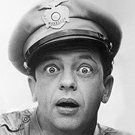
.thumb.jpg.cd22b958c9e88a898a21e18b862c523e.jpg)
